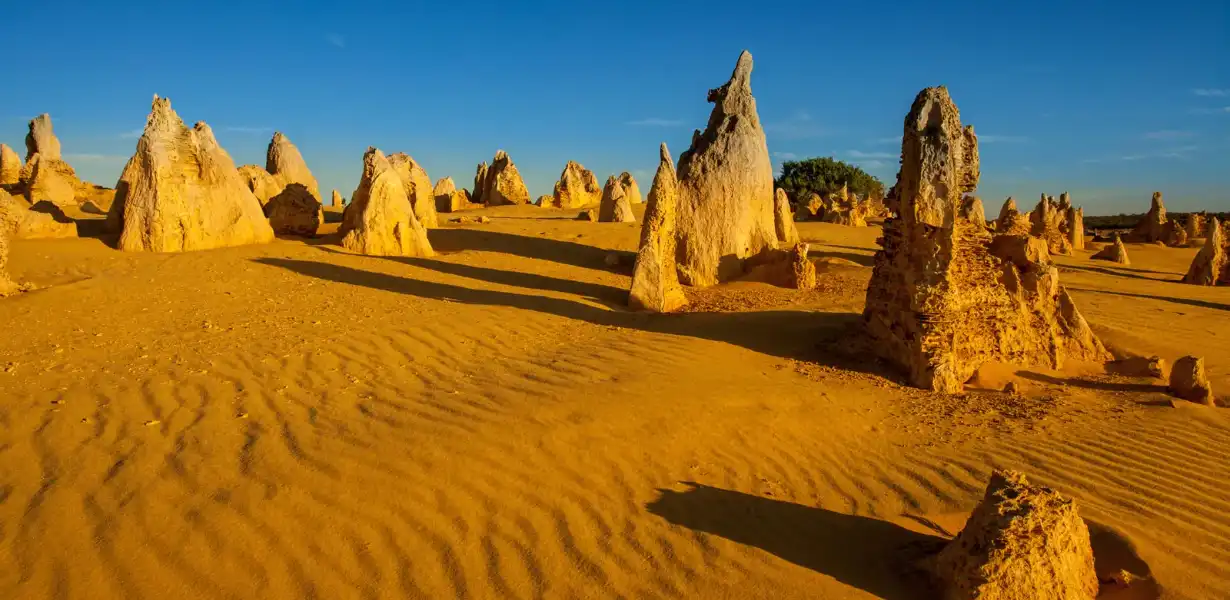
With its vast expanse covering parts of Western Australia, the Northern Territory, and South Australia, the Gibson Desert stretches over 156,000 square kilometers, making it one of the largest deserts in Australia. This arid landscape boasts a stark and mesmerizing beauty that hides a wealth of natural wonders and adaptations that have evolved over millennia.
The Geographical Marvel
The Gibson Desert’s captivating geography is dominated by sand dunes that seem to stretch endlessly, sculpted by the whims of the wind. The towering dunes, some reaching heights of 200 meters, are interspersed with salt flats and spinifex grasslands, creating a dynamic and ever-changing vista.
Evolving Flora and Fauna
Despite its arid nature, the Gibson Desert harbors a surprisingly diverse range of plant and animal life. Resilient flora like the spinifex grass plays a vital role in stabilizing the dunes, preventing erosion, and providing habitat for a myriad of creatures. The desert’s fauna includes the iconic red kangaroo, thorny devils, and an array of reptiles that have evolved to thrive in this harsh environment.
Aboriginal Connection and Culture
The Gibson Desert holds profound significance for the Indigenous peoples of Australia, particularly the Pintupi, Pitjantjatjara, and Yankunytjatjara communities. Their deep connection to the land is woven into the intricate Dreamtime stories that tell of the desert’s creation and the spiritual beings that inhabit it.
Natural Challenges and Adaptations
Surviving in the Gibson Desert is a feat of adaptation. Plants and animals have evolved ingenious strategies to endure the relentless heat and scarcity of water. From the kangaroo’s ability to go for extended periods without drinking to the saltbush’s capacity to extract moisture from the ground, nature’s solutions are a testament to the power of evolution.
Astronomical Splendors
Beyond its terrestrial marvels, the Gibson Desert also offers a celestial spectacle. With minimal light pollution, the desert becomes a stargazer’s paradise, offering crystal-clear views of the Southern Hemisphere’s night sky. The Milky Way stretches across the horizon, and constellations tell stories of ancient lore.
Conservation and Preservation
Recognizing the fragility and ecological significance of the Gibson Desert, conservation efforts have been initiated to protect its unique biodiversity. National parks and reserves have been established to safeguard this pristine desert landscape for future generations to marvel at and learn from.
Exploring the Unknown
The Gibson Desert continues to be a source of fascination for scientists, researchers, and adventurers alike. Its remote and untouched nature invites exploration and discovery, inspiring those who dare to venture into its depths.
Final Words
In the heart of Australia lies the Gibson Desert—a mesmerizing expanse of sand dunes, spinifex grasslands, and celestial wonders. Home to unique flora, tenacious fauna, and rich Indigenous heritage, this arid landscape captivates with its untamed beauty. As the sun sets over its vast horizons, the Gibson Desert reminds us of the profound resilience of life in the face of adversity.
Commonly Asked Questions
Q1. What is the significance of the Gibson Desert to Indigenous communities?
The Gibson Desert holds deep spiritual and cultural significance for Indigenous peoples like the Pintupi, Pitjantjatjara, and Yankunytjatjara. It’s woven into their Dreamtime stories and traditional practices, representing their connection to the land and its creation.
Q2. How do plants and animals survive in such an arid environment?
The desert’s inhabitants have evolved remarkable adaptations. Plants like the saltbush extract moisture from the soil, while animals like the red kangaroo can go without drinking for extended periods, relying on the moisture from their food.
Q3. What conservation efforts are in place to protect the Gibson Desert?
Various national parks and reserves have been established to safeguard the desert’s unique biodiversity. These efforts aim to preserve the fragile ecosystem and maintain its ecological balance.
Q4. Can you visit the Gibson Desert?
While the Gibson Desert is a remote and challenging destination, guided tours and expeditions offer the opportunity for adventurous travelers to explore its rugged beauty and learn about its natural and cultural heritage.
Q5. What celestial wonders can be observed in the Gibson Desert?
With minimal light pollution, the Gibson Desert provides stunning views of the night sky. Stargazers can marvel at the Milky Way, Southern Hemisphere constellations, and other astronomical phenomena that illuminate the desert’s night canvas.





